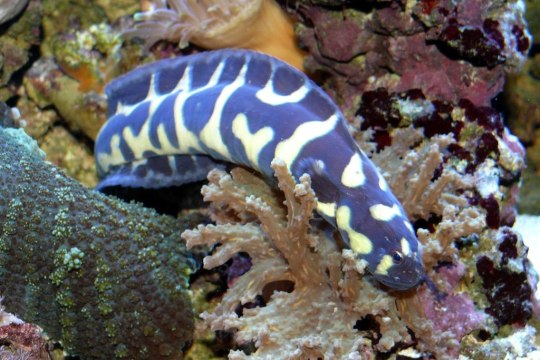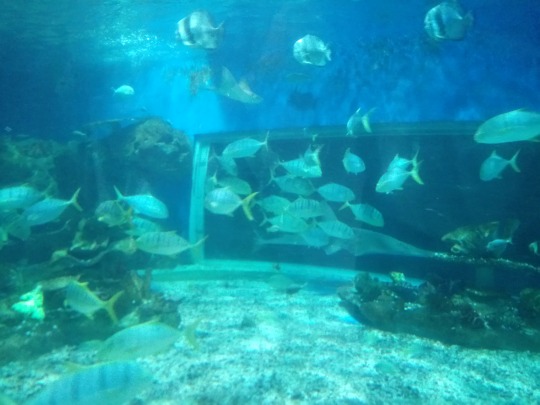#Ambassidae
Explore tagged Tumblr posts
Text
Uncharismatic Fact of the Day
This fish is ready and rearing to go trick or treating! The Indian glassy fish is so called for its completely transparent body. Every inch of its insides-- it's spine, bones, and internal organs, are all visible to the naked eye. It's thought that this clarity helps the fish to blend into its environment.

(Image: An Indian glassy fish (Parambassis ranga) by Tse Chung Yi)
#indian glass fish#Perciformes#Ambassidae#asiatic glassfish#ray-finned fish#bony fish#fish#uncharismatic facts
56 notes
·
View notes
Text
Taxonomy Tournament: Fish


Ambassidae. This family is known as the Asiatic glassfishes, due to several species having translucent bodies.
Cichliformes. This order is made up of convicet blennies and cichlids like the freshwater angelfish.
#animals#biology#polls#poll tournament#zoology#glassfishes#fish#blennies#Ambassidae#Cichliformes#0x63v0x9c#animal tournament#Animal Tournament Round 1
44 notes
·
View notes
Video
Asiatic glassfish - enigmatic Ambassidae #marineexplorer by John Turnbull Via Flickr: These little fishes often have semi-transparent bodies and live throughout Asia and Oceania. They are "enigmatic taxa" (incertae sedis), ie the relationships between species and genera are uncertain. Clifton Gardens
6 notes
·
View notes
Text
Manila Ocean Park

General History of Ex-Situ Conservation site:
The park is owned by China Oceanis Philippines Incorporated, which is a subsidiary of China Oceanus Group Ltd (COG). Specializations of the company include: investment, putting up, and operation of various oceanarium attractions. After several years of experience, the group responsible for running this company now comprises of an experienced team of specialists that are experts on providing services to the developers as well as operators of different public aquarium facilities.
Conservation Strategy and Management Practices:
1. Endangered species are banned in the area.
2. Coastal resource management is being employed in places where the species found in the park are retrieved from.
3.Energy-efficiency is considered to be a priority in the running of the park’s operations
4. Those working in the park are constantly being updated regarding the threatened and endangered organisms in the country.
Some freshwater and marine organisms in the area:

1. Large Tooth Sawfish- member of a group of fish called elasmobranchs, whose skeletons comprise of cartilage. These organisms can grow up to 23 feet long and may weigh up to 1,300 pounds. They have a life span of up to 80 years.
2. Sharks- also a member of the elasmobranchs. Distinct five to seven gill slits are found to be present near the side of the head of these organisms. There are more than 465 identified species living in the marine systems as of today.
3. Stringrays- These are flattened fishes that are closely related to sharks. They have no bones present in the body. Instead, their bodies are made up of flexible cartilage. They are oviparous creatures, which means that they lay eggs and these eggs are enclosed and protected by what is known as a “mermaid’s purse.”
3. Sea Lions- sea mammals that are quadrupedals (can walk on all fours). They have external ear flaps, elongated foreflippers, short and thick hair, and a big abdomen. They are categorized under family Otariidae.
4. Jellyfish- were already present before dinosaurs even strived to live on Earth. These are jellylike creatures that move along the ocean currents and are usually abundant in cold as well as warm ocean water and even along the coastlines. They are characterized by their tiny stinging cells found in their tentacles which serve to stun the prey before devouring them.
5. Glassy Perchlet- found mainly in Asia and can grow up to 3.9cm in length. These are categorized under family Ambassidae of order Perciformes, which is the only species in the genus Chanda. They usually are found in coastal and brackish waters, and may even strive in freshwaters.
6. Common seahorse- these organisms can easily blend into their surroundings and are among the smallest seahorse species found all over the globe. What appears to be crowns located on the top of the heads of the seahorses are actually very distinct in each organism and can be likened to fingerprints of humans.
7. Starfish- They can also be called as “sea stars” and are star-shaped echinoderms under class Asteroidea. There are up to 2,000 living species of sea stars identified all over the world. Most species have five arms but some may have up to 40.
8. Clownfish- Also known as anemonefish. They belong to subfamily Amphiprioninae in the family Pomacentridae. They are known to have symbiotic mutualism relationship with the sea anemones. A popular animated movie entitled: “Nemo” is inspired by this marine organism.
9.Saddleback butterflyfish- has the scientific name: Chaetodon ephippium and resides along the Indian and Pacific Oceans from Sri Lanka, north to southern Japan, and New South Wales in Australia. What makes them unique is the presence of a large black “saddle” with white border found on its upper body.
10. Pajama Cardinalfish- also known as pajama cardinalfish, spotted cardinaldish, coral cardinalfish, and polkadot cardinalfish. This is actually a very common and popular aquarium fish. Its body comprises of a rainbow of colors and has a greenish-yellow colored face.
Trivia:
Water coming from Manila Bay is actually being filtered and used as the water source for the park’s Oceanarium. The special filtering process is being conducted so as to ensure that the quality of water is suitable for marine life.

0 notes
Conversation
The signs as Ambassidae:
Aries: Tetracentrum
Taurus: Tetracentrum
Gemini: Pseudambassis roberti
Cancer: Lepidophagy
Leo: Parambassis pulcinella
Virgo: Denariusa australis
Libra: Parambassis apogonoides
Scorpio: Elongate glassy perchlet
Sagittarius: Parambassis ranga
Capricorn: Parambassis
Aquarius: Parambassis altipinnis
Pisces: Ambassidae
0 notes
Photo

4 notes
·
View notes

